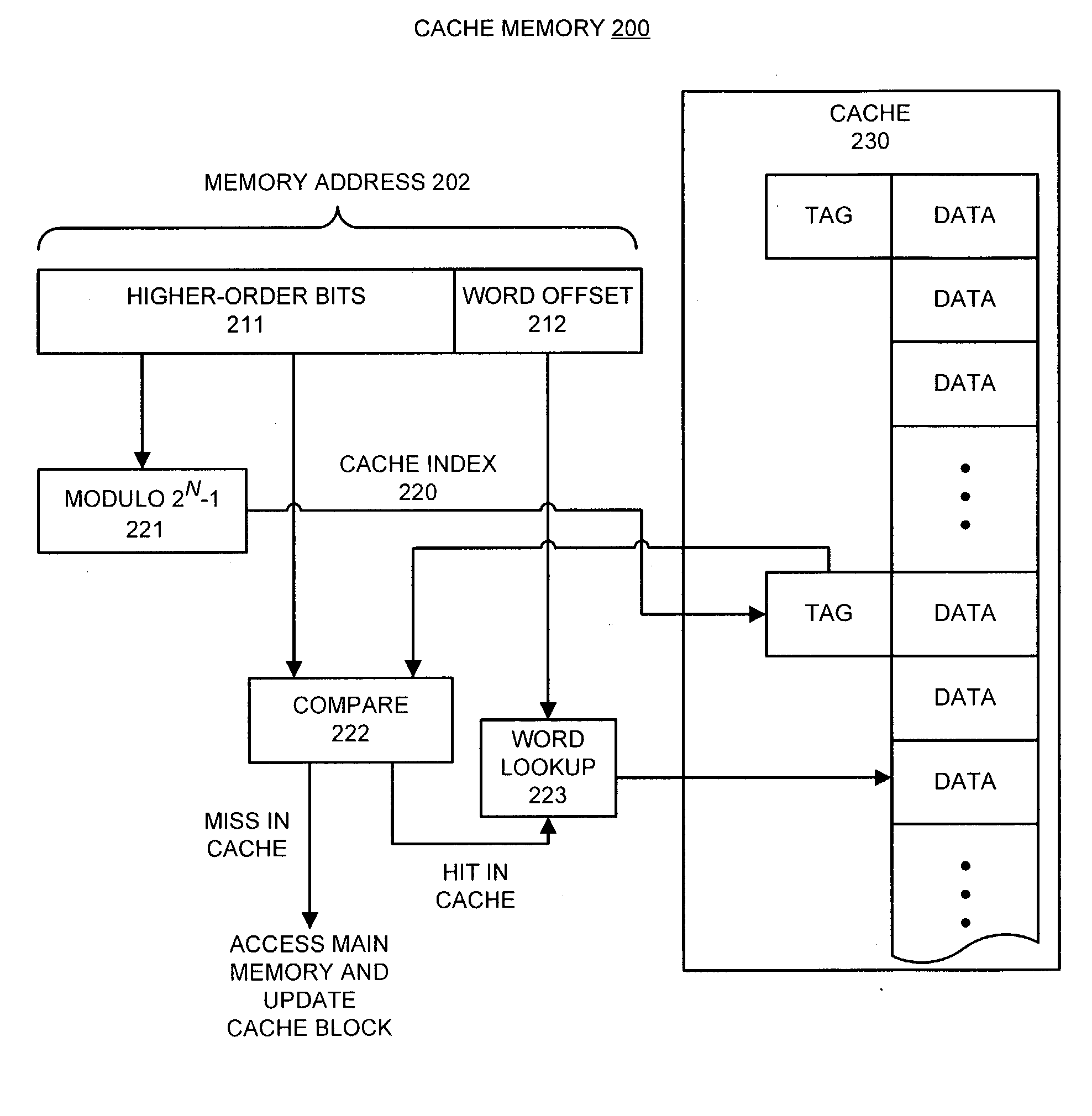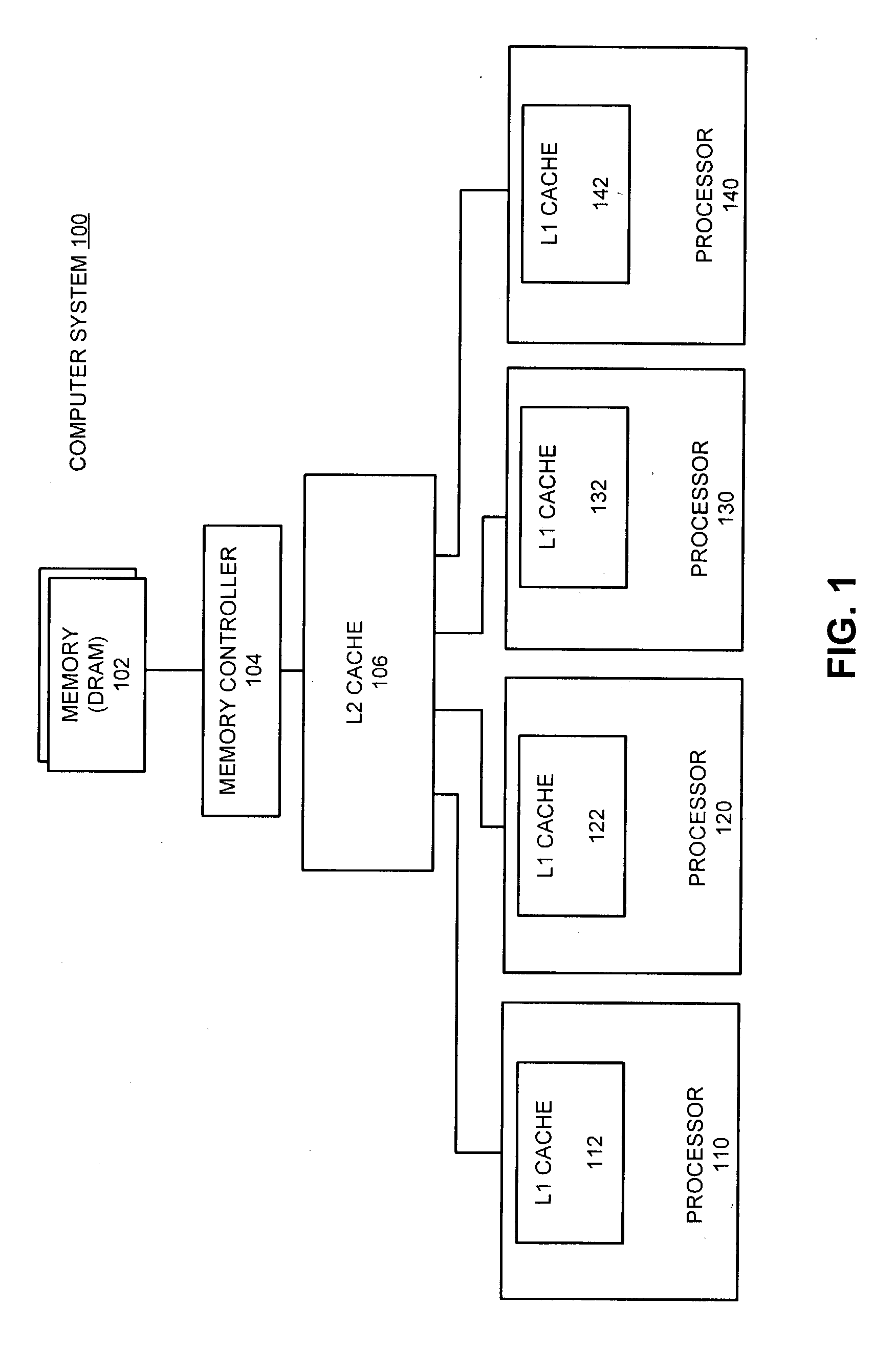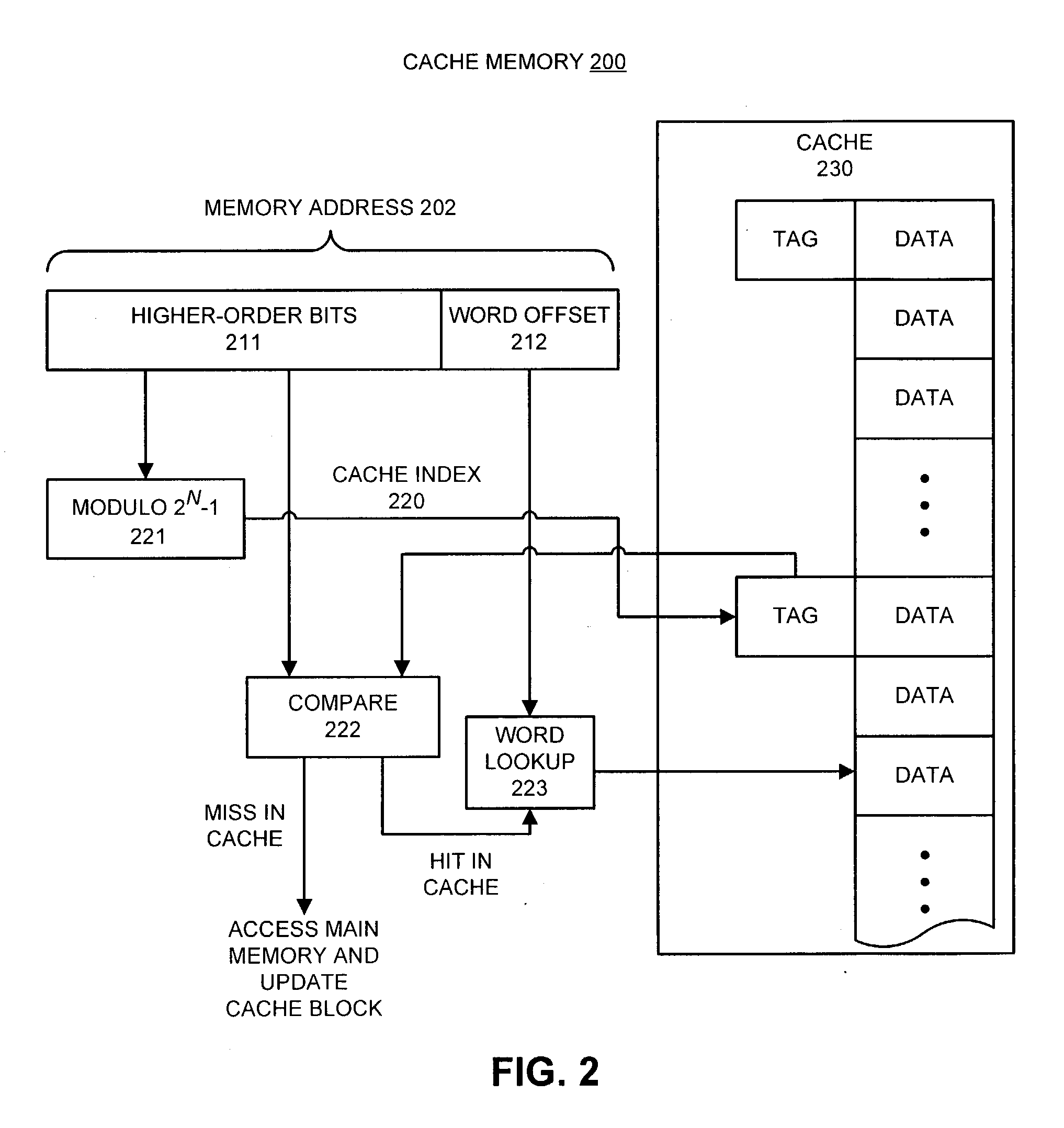Method and apparatus for mapping memory addresses to corresponding cache entries
a memory address and cache entry technology, applied in the field of cache memory design, can solve the problems of increasing pressure on computer system designers to achieve shorter propagation delays through computational circuitry, memory access delays can generate a severe bottleneck, and the computational performance depends on not only the processor speed, but also other time-consuming operations
- Summary
- Abstract
- Description
- Claims
- Application Information
AI Technical Summary
Problems solved by technology
Method used
Image
Examples
Embodiment Construction
[0049] Table 1 presents exemplary C code illustrating how the hardware 10 in one embodiment of the present invention calculates the (2.sup.N-1) modulo of the higher-order bits of a memory address for an exemplary 8 MB direct-mapped cache with 64 byte blocks.
1TABLE 1 #define CACHE_BLOCK_ADDR_BITS 6 / * 26{circumflex over ( )}6 = 64 bytes * / #define CACHE_ENTRIES_MASK 0x1ffff / * 2{circumflex over ( )}17-1 * / #detine CACHE_ENTRY_BITS 17 / * 2{circumflex over ( )}17 = 8 MB * / cacheIndex (paddr) { / * assumes 40 bit paddr* / paddr=paddr>>CACHE_BLOCK_ADDR_B-ITS; do{ paddr = (paddr&CACHE_ENTRIES_MASK) + ((paddr>>CACHE_ENTRY_BITS)& CACHE_ENTRIES_MASK); }while(paddr>CACHE_ENTRIES_MASK); return paddr==CACHE_ENTRIES_MASK ? 0 : paddr; }
[0050] In another embodiment of the present invention, the system can simplify the (2.sup.N-1) modulo operation as is illustrated by the C code shown in Table 2.
2TABLE 2 #define CACHE_BLOCK_ADDR_BITS 6 / * 2{circumflex over ( )}6 = 64 bytes * / #define CACHE_ENTRIES_MA...
PUM
 Login to View More
Login to View More Abstract
Description
Claims
Application Information
 Login to View More
Login to View More - R&D
- Intellectual Property
- Life Sciences
- Materials
- Tech Scout
- Unparalleled Data Quality
- Higher Quality Content
- 60% Fewer Hallucinations
Browse by: Latest US Patents, China's latest patents, Technical Efficacy Thesaurus, Application Domain, Technology Topic, Popular Technical Reports.
© 2025 PatSnap. All rights reserved.Legal|Privacy policy|Modern Slavery Act Transparency Statement|Sitemap|About US| Contact US: help@patsnap.com



